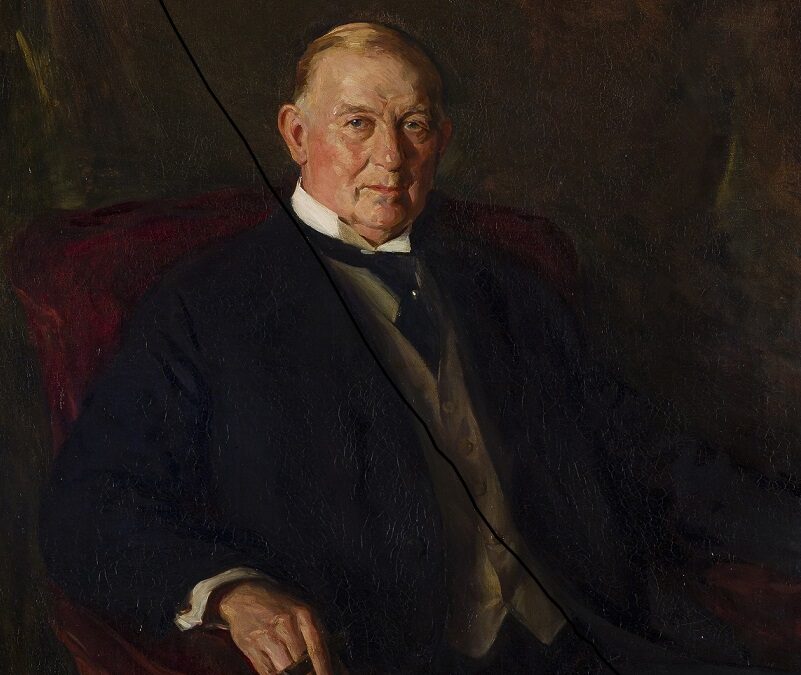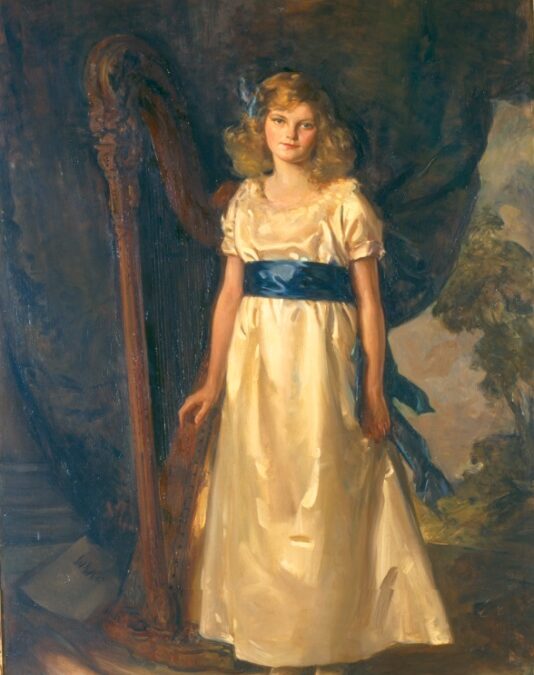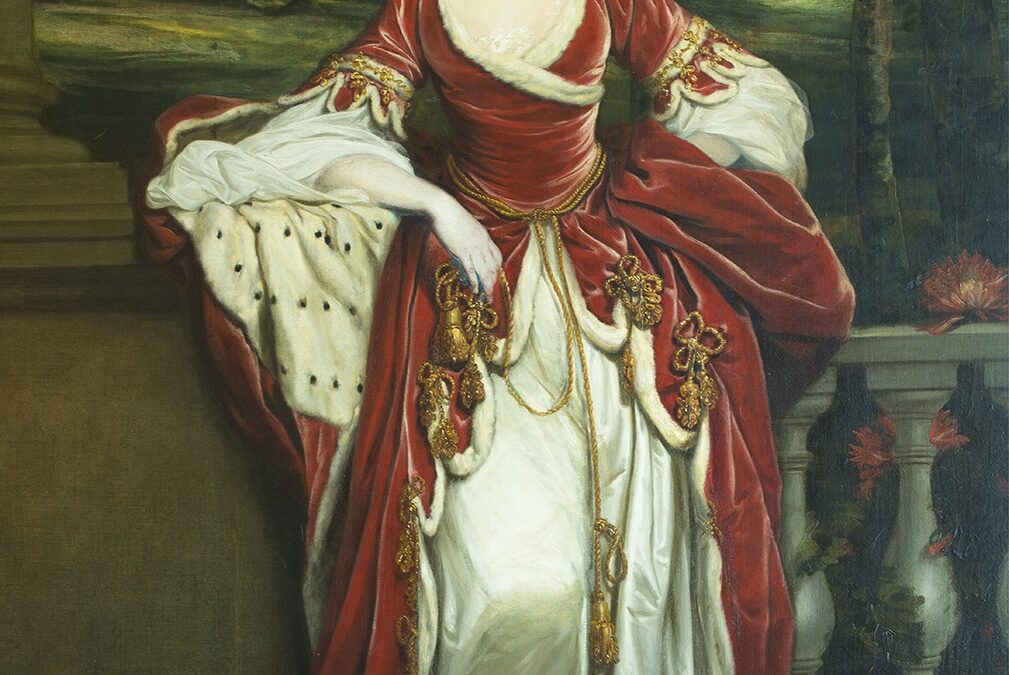
by NRF User | Jan 3, 2024
James Buchanan Duke (1856-1925) was the father of Doris Duke and benefactor of Duke University. The Duke fortune came from tobacco and electric power. A similar portrait hangs in the Duke University Library alongside a posthumous portrait of his father, Washington Duke, James B. Duke’s father. Both this and the Duke Library portrait were commissioned to commemorate the creation of the Duke Endowment, a $40 million donation made by James B. Duke in 1924. This gift supported several North Carolina colleges, including Trinity College in Durham, which would later be renamed Duke University after Washington Duke.

by NRF User | Jan 3, 2024
Doris Duke sat for this portrait in 1923, the year that Rough Point was being renovated for the Duke Family by Philadelphia architect Horace Trumbauer. The artist, John Da Costa, had been commissioned around the same time to paint formal portraits of her father, the tobacco and energy tycoon James B. Duke, and grandfather, Washington Duke, after whom Duke University was renamed in the 1920s.

by NRF User | Jan 3, 2024
Portrait of a young Charles, Prince of Wales (1630-1685), in court costume. This is one of two paintings by Van Dyck, the court painter to Charles I that Doris Duke bought for Rough Point in 1963.

by NRF User | Jan 3, 2024
Charles Oldfield Bowles (1785-1862) was the son of an amateur painter and musician Oldfield Bowles (1739-1810) of North Aston, Oxfordshire. This was the first of five John Hoppner paintings owned by James B. Duke. He purchased it in 1908 not long after his marriage in 1907 to Nanaline Holt Inman.

by NRF User | Jan 3, 2024
Caroline Spencer, the Fourth Duchess of Marlborough, was a powerful woman. In this portrait— by court portrait artist Reynolds—the Duchess wears a sumptuous dress with ermine lining.
Doris Duke purchased this portrait from the estate of Matilda Dodge Wilson of Meadowbrook Hall in 1970 and placed it alongside other full-length portraits of British nobles on the grand staircase of Rough Point. And while we don’t know what drew Doris to this painting in particular—it’s interesting that Doris collected and displayed symbols—like this portrait— of strong, powerful women. You can follow the portraits up the grand staircase at Rough Point—past a future king, a noblewoman, a marchioness, until you get to the portrait of Nanaline Duke—and right next to her, Doris Duke as a young girl.





